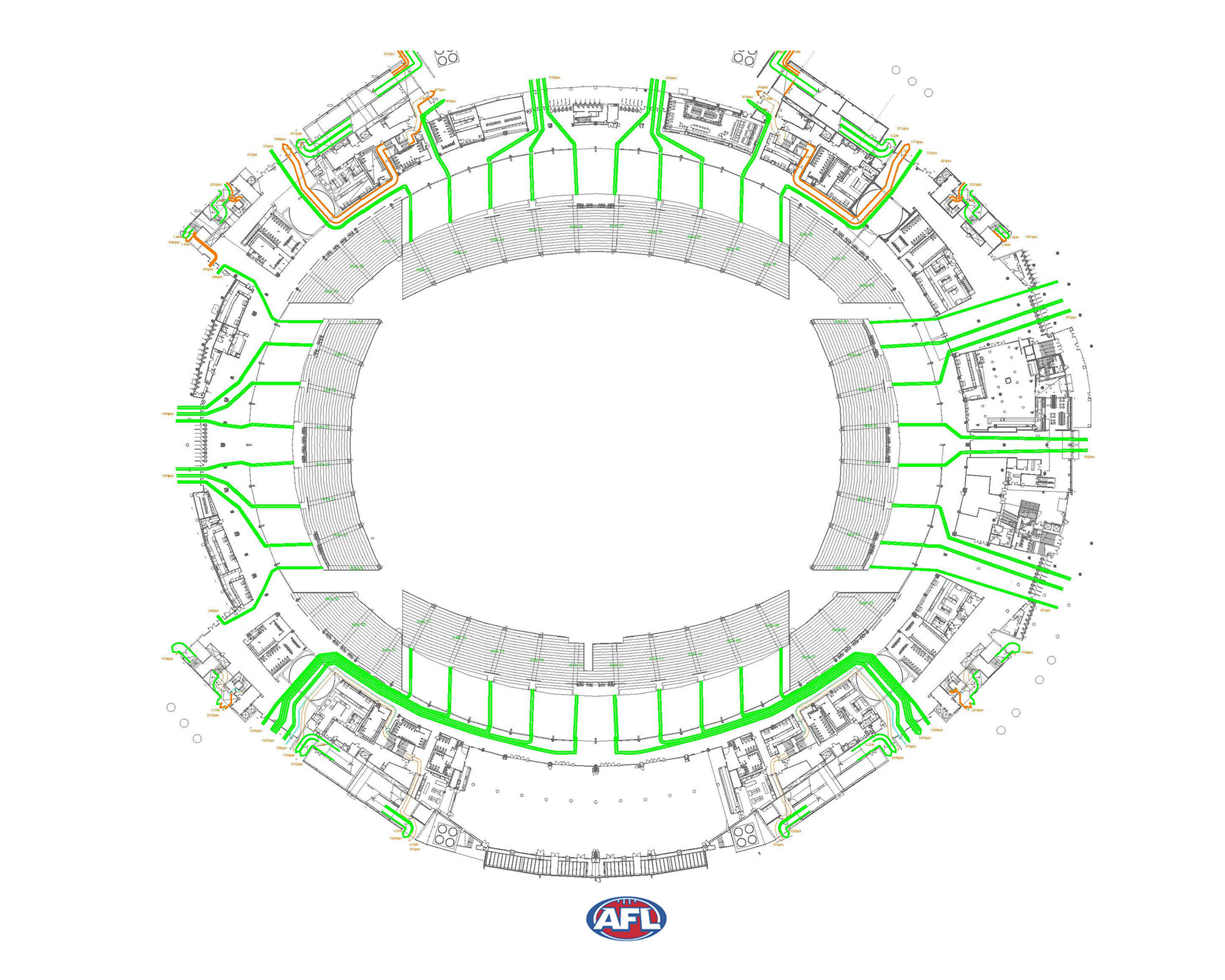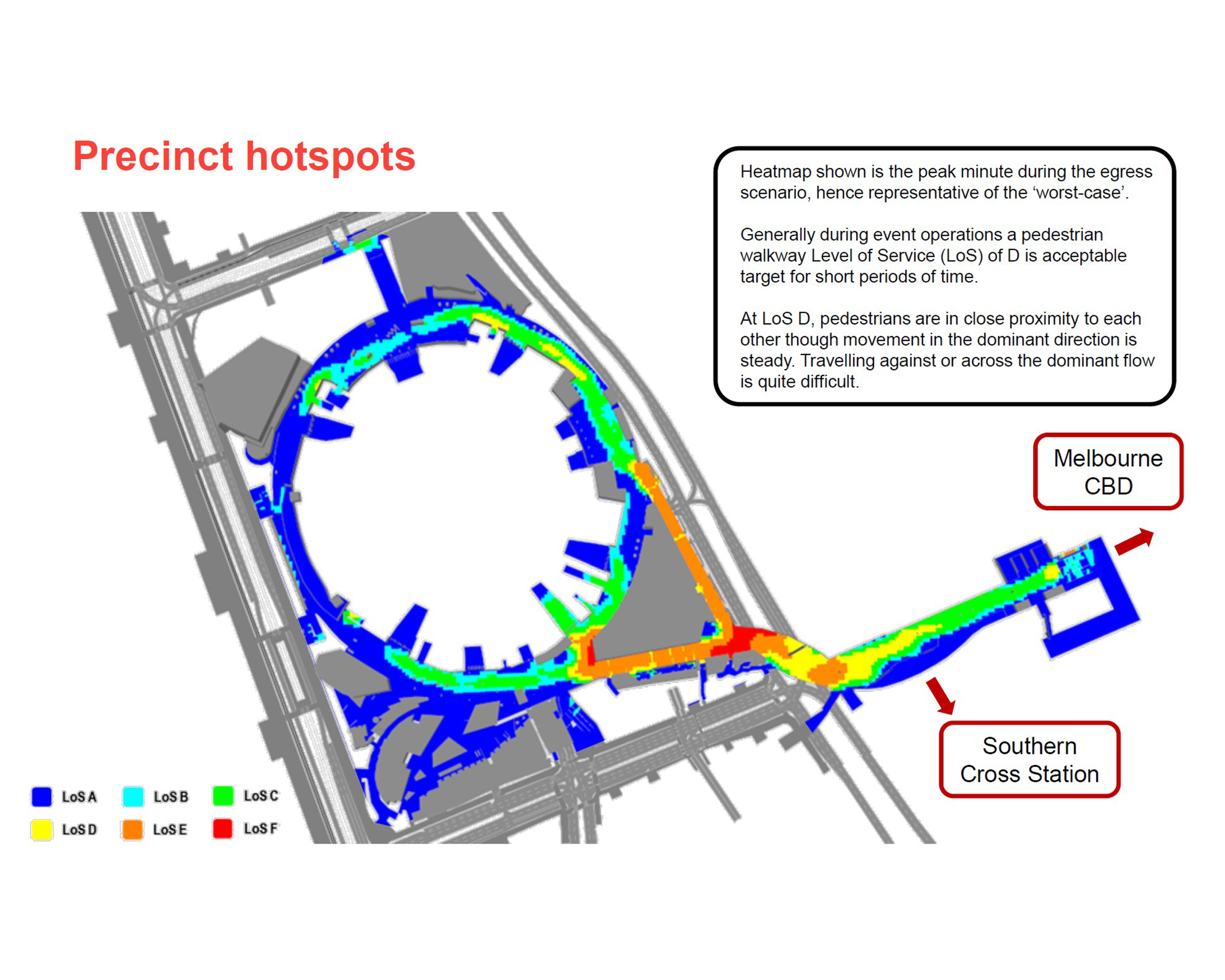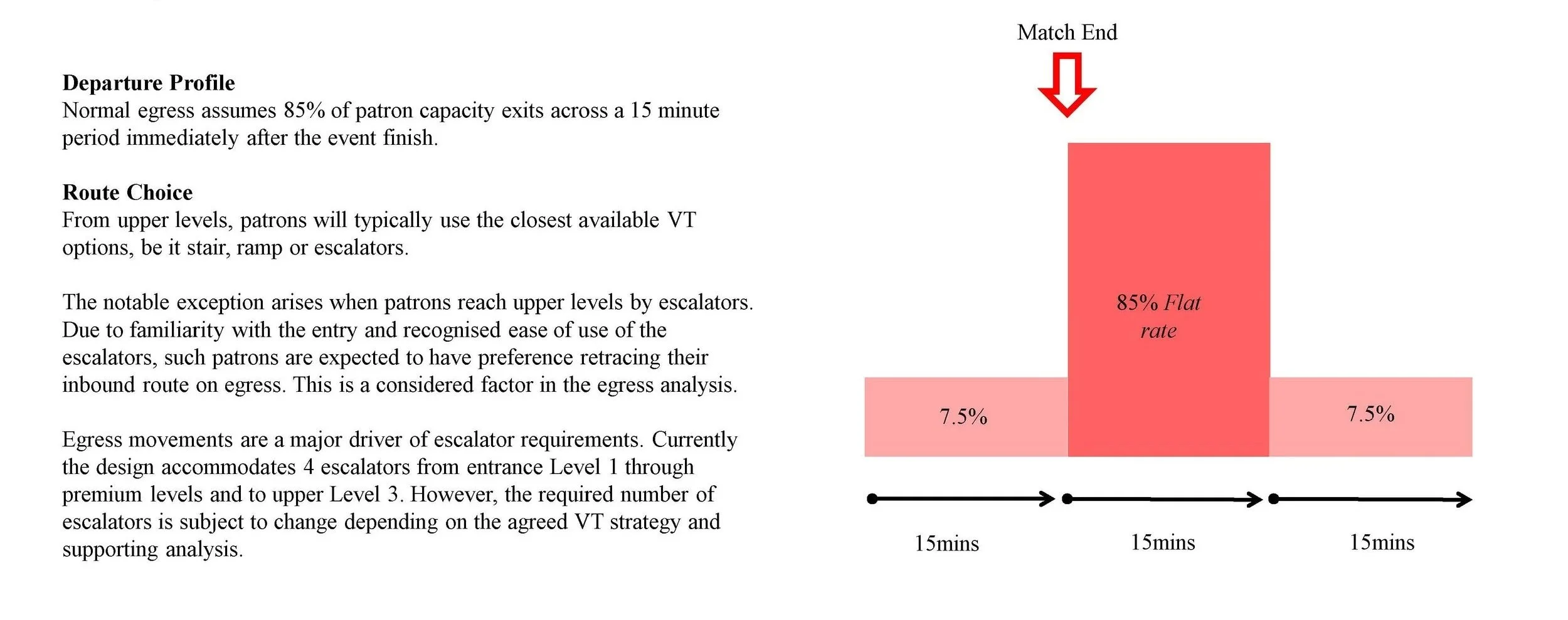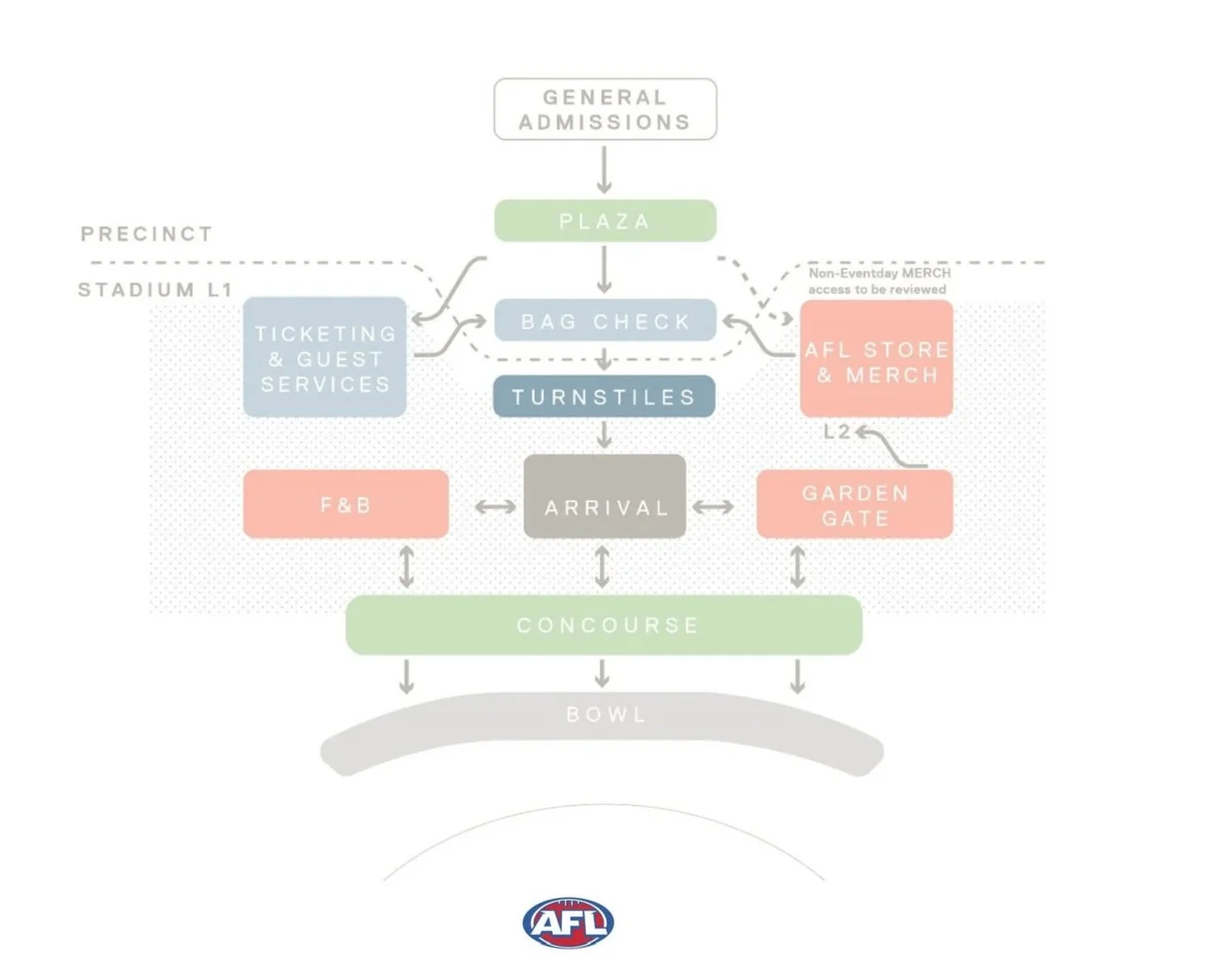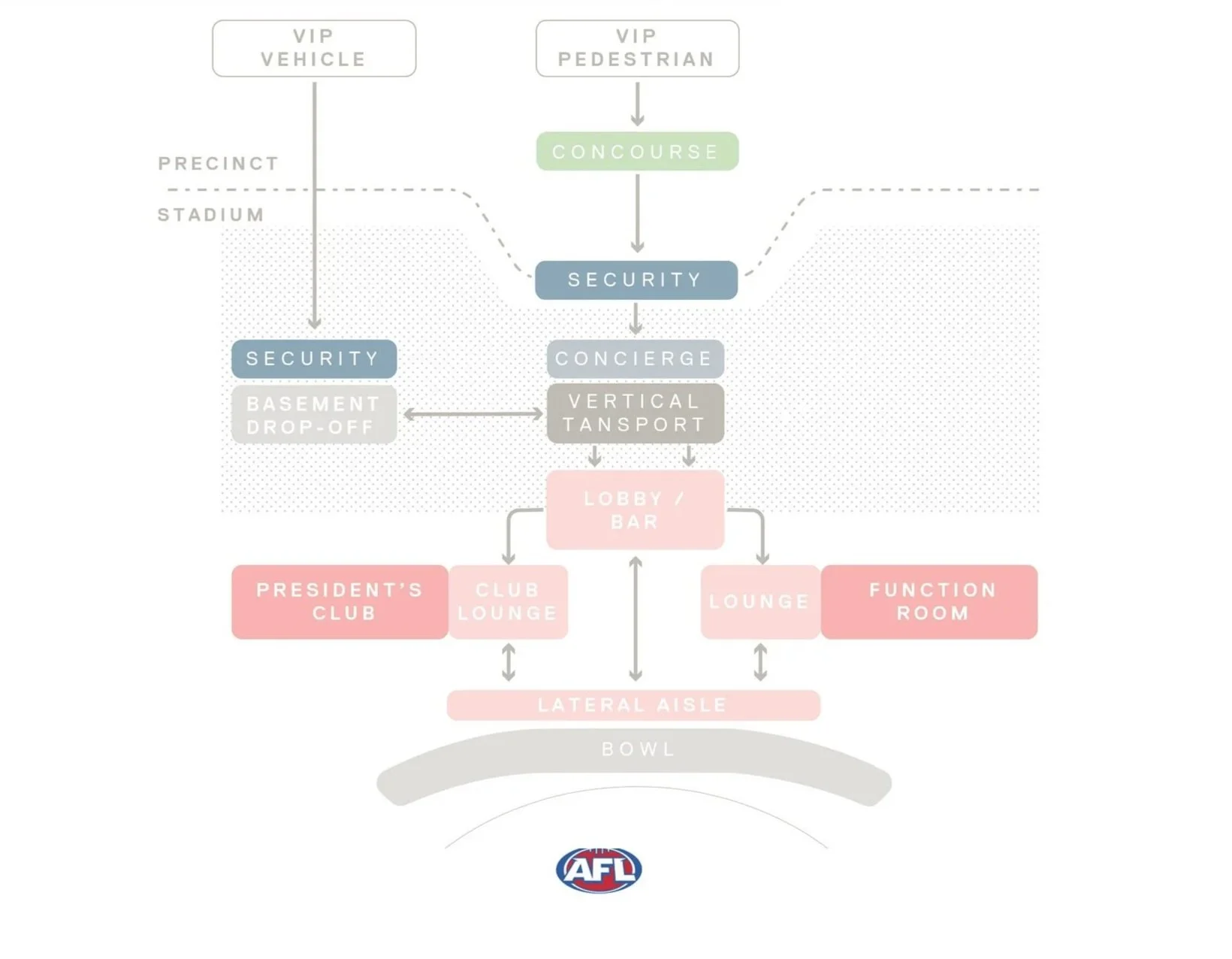Marvel Stadium Upgrade
User-Centric Sports & Entertainment Venue Upgrade
My Role
Design & Documentation Lead
Purpose
The Marvel Stadium Redevelopment aimed to transform an existing major sports and entertainment venue into a modern, engaging, and operationally efficient facility. The redevelopment enhanced fan experience and increased venue versatility to meet the demands of future sporting and entertainment markets.
The Problem
Marvel Stadium was operational but faced growing challenges in meeting evolving fan expectations, increasing competition from other venues, and the need for upgraded infrastructure to support a wider variety of events. The redevelopment required a balance between design innovation, operational functionality, and stakeholder alignment—while ensuring ongoing stadium operations throughout.
Project Objectives
Enhance User Experience - Improve accessibility, comfort, and engagement for fans and visitors.
Modernise Infrastructure - Integrate new digital, operational, and architectural solutions.
Increase Venue Flexibility - Support multiple sports and entertainment configurations.
Align Stakeholders - Deliver a unified vision between the stadium operator, sports leagues, sponsors, and design teams.
Project Description
The redevelopment included upgrades to public concourses, hospitality areas, player facilities, event infrastructure, and fan engagement spaces. My role was to manage design documentation, coordinate with multiple disciplines, and translate complex architectural and operational requirements into clear, actionable outputs that supported construction and stakeholder decision-making.
Key Features
Fan Engagement Spaces – Enhanced seating, concourse amenities, and interactive zones.
Multi-Use Flexibility – Modular and adaptive design for various event types.
Operational Efficiency – Improved flow, accessibility, and back-of-house functionality.
Integrated Technology – Digital infrastructure upgrades for in-venue experiences.
Risks & Mitigations
Operational Disruption - Phased construction to allow ongoing events.
Stakeholder Misalignment - Frequent design review sessions and clear documentation.
Budget/Timeline Pressures - Strict milestone tracking and scope management.
Stakeholders
AFL (Australian Football League), Stadium operator, sports leagues, entertainment promoters, sponsors, hospitality providers.
What I learnt
Evidence-Based Planning | Cross-Discipline Collaboration | Client Engagement | User-Centric Solutions | Feedback-Driven Iteration | Cross-Platform Delivery | Self-Initiated Leadership
Data -driven Design
1 - Patron egress data mapping
Egress movement data
Precinct Hotspots (heat mapping egress flow)
2 - Match-day Egress Key Results
3 - Designing User-group Egress Flows
General Admission User-group Flow
Premium Patron User-group Flow



